Liquid Chalk vs Regular Chalk – Which One Should You Use?
Do you want to use regular chalk for your workouts and leave a chalky mess everywhere you go? Or would you prefer a more clean solution? Well, I wonder if you even knew that liquid chalk existed! I know I didn’t, at one point. And if you just learned now, let me tell you all about liquid chalk and how it compares to dry chalk – powder and block form.
Liquid chalk vs regular chalk is the semi-new debate in the fitness world. As someone who has used both, I can attest to the fact that liquid chalk has been a game-changer for me. No more chalky residue on my clothes or the equipment I use, and it provides a better and longer-lasting grip for lifting.
However, some people swear by regular chalk and are hesitant to switch over. So, in this article, I’ll dive into both options’ pros and cons to help you make a decision that goes along your standards and your way of thinking.
Let’s smear that chalk!
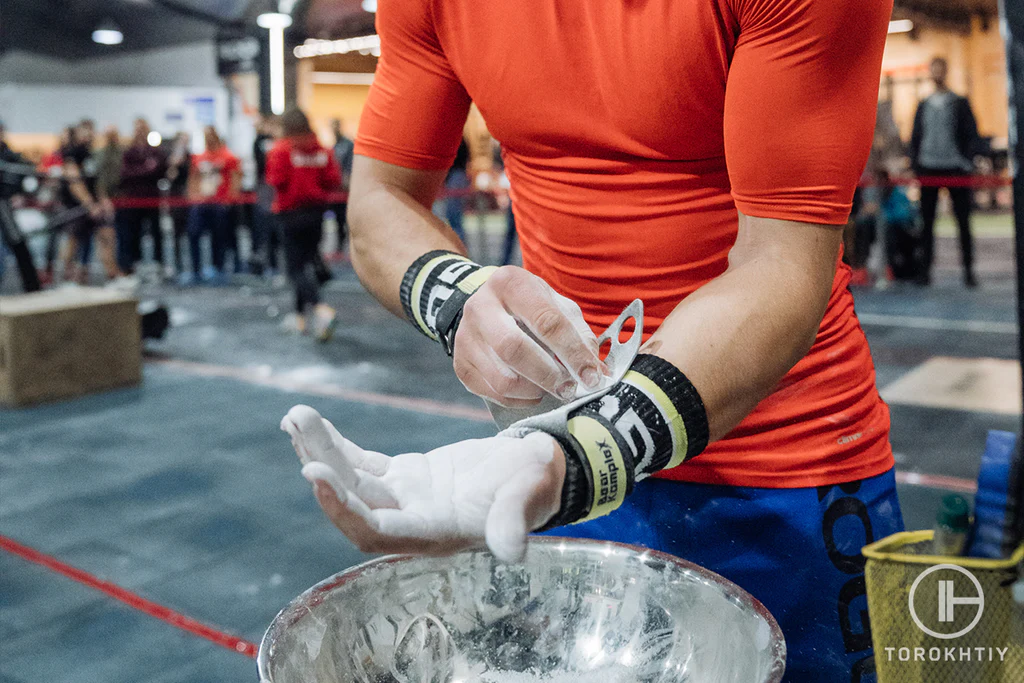
Liquid Chalk vs Regular Chalk – What Are the Differences?
Liquid chalk is a form of gym chalk that comes in a liquid form; it requires less application and produces less mess. Regular chalk comes in either block or powder form, which may be messier but is typically more affordable.
What Is the Difference Between Liquid and Dry Chalk?
When pitting liquid grip vs chalk, the first thing you see is the most obvious difference – one is liquid, while the other is liquid. But what else is there, and why does chalk come in two different aggregate states?
First off, let’s talk about dry chalk. This traditional chalk is made by compressing magnesium carbonate into blocks or powder. While it does a great job of keeping your hands dry and improving grip, it can leave a powdery mess all over the gym equipment and workout clothes. Not to mention, it can be challenging to apply evenly, leaving some areas of your hands more chalky than others.
On the other hand, we have liquid chalk. This newer form of chalk is essentially a suspension of chalk powder in alcohol. It goes on as a liquid and quickly dries into a smooth, even layer of chalk on your hands. This means no more chalk dust flying around the gym and no more uneven application. Plus, it tends to last longer on your hands, which can be a game-changer for those long workouts.
It has also been proven that liquid chalk has antiseptic properties that can help with stopping the spread of viral and bacterial diseases by terminating them. But also dry chalk and liquid chalk, regardless of the alcohol, both have shown that they can limit the transfer of microorganisms.
However, as with any product, there are certain disadvantages to using liquid chalk. It’s helpful in preventing your hands from becoming wet, but repeated usage may be drying and can cause cracking. Because of its liquid form, liquid chalk may be difficult to apply precisely, often resulting in chalk buildup on the user’s hands and tools.
In terms of longevity, both liquid and dry chalk can last for several workouts, but it really depends on how much you use and how often you reapply. Dry chalk may need to be reapplied more frequently, especially if you’re doing a lot of heavy lifting or sweaty workouts, whereas liquid chalk tends to last longer and can even be reapplied on top of the initial layer if needed.

Maximize your grip with premium quick-drying Warm Body Cold Mind liquid chalk leaving no mess.
Liquid Chalk vs Regular Chalk Comparison
Let’s talk about both types of gym chalk but in a way where I’ll point out the main aspects of what defines how good a chalk product is.
1. Ease-of-Use
So we’ve established two types of chalk – liquid and dry. But have you ever wondered which one is easier to use? Let’s take a look at the differences between the two.
Ease of use is the first thing we’ll tackle in the liquid chalk vs dry chalk debate. Dry chalk is the classic form of chalk. If you ever saw chalk in a gym or a gym-like environment, it was likely dry chalk in the form of a block or a powder. Dry chalk is known for its excellent grip-enhancing properties.
The chalk comes in blocks or powder form and is applied by rubbing it on your hands. While it’s great for grip, dry gym chalk can be messy and cause a cloud of chalk dust to cover the entire gym.
On the other hand, liquid chalk is much easier to use and less messy than dry chalk. Liquid chalk comes in a bottle and is applied like lotion. It dries quickly, leaving a thin layer of chalk on your hands that lasts much longer than dry gym chalk. Plus, it doesn’t create a cloud of chalk dust like dry gym chalk.
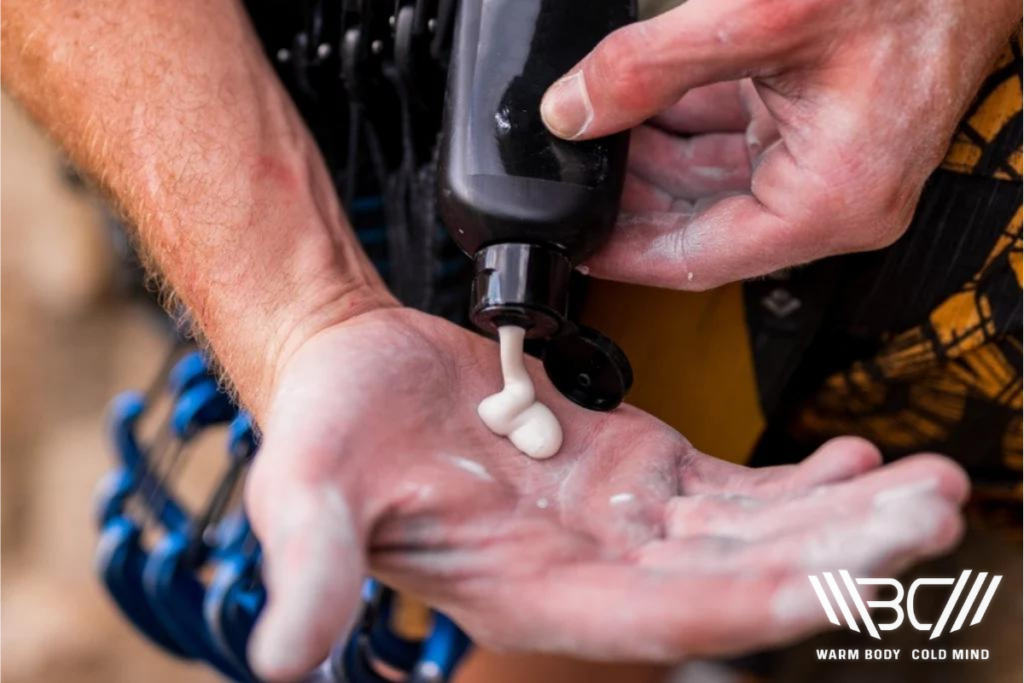
So, while both types of chalk have pros and cons, liquid chalk is the clear winner regarding ease of use. So next time you’re at the gym, give liquid chalk a try and see for yourself how easy it is to use!
Winner: Liquid Chalk
2. Mess
If you’ve ever used dry chalk or have seen someone use it, it probably looked something like this – dip your hands into the chalk with a hand-washing motion. Small chalk dust starts rising from the chalk tray. Then pull your hands out of the container, and all the extra accumulated chalk drops on the floor. Then do a few claps to get rid of the extra material.
Massive dust clouds form with each clap, and small chalk particles scatter all over the place (floor, gym equipment, your clothes, other people’s clothes, …). The floors are slippery, people are coughing, and no one’s happy. It is a mess. Period. With a fresh chalk block, it is a bit better, but generally, after it wears down and more powder is formed, it is pretty much the same story. Quite chaotic!
With liquid chalk, the story is quite different. You take the bottle. Open the cap. Then squirt a small bit of the liquid onto your other hand. Close the cap. There are no dust clouds forming. But even if there are some, they are negligible in size when compared to dry chalk.
And you use the palms of both of your hands to distribute the liquid across the whole surface of your palms. Then wait a few moments until the alcohol evaporates. And you’re ready to go.
Liquid chalk can create a mess while doing your exercises. While dry chalk does the same, you can simply take a damp piece of cloth to clean it. With liquid chalk, it can sometimes be more difficult to clean the equipment.
But this round definitely goes in favor of liquid chalk!
Winner: Liquid Chalk

3. Longevity
If you’re wondering which chalk lasts longer, liquid or dry, it’s time to get the lowdown. When it comes to longevity, there are some differences between the two.
Dry chalk tends to last longer on your hands, providing a more consistent grip throughout your workout. On the other hand, liquid chalk tends to dry out more quickly, which can lead to a decrease in its effectiveness over time.
Dry chalk can be used multiple times before reapplying, whereas liquid chalk usually needs to be reapplied more frequently. However, liquid chalk comes in a smaller, more convenient package that can be easily carried in your gym bag.
If you’re a heavy sweater or have sweaty palms, dry chalk may only last for a while and may even become clumpy, making it challenging to apply evenly. In this case, liquid chalk may be a better option for maintaining a consistent grip throughout your workout.
The longevity of both types of gym chalk depends on the intensity and duration of your workout, as well as your preference. Some people prefer the consistency and reliability of dry chalk, while others enjoy liquid chalk’s convenience and quick-drying nature.
Whichever type of chalk you choose, remember to use it responsibly and be considerate of others in the gym by minimizing the amount of chalk dust in the air and cleaning up any excess residue.
Winner: Tie
4. Health & Safety
When it comes to the health and safety of gym chalk, there are pros and cons to consider when choosing between dry and liquid chalk.
One of the main benefits of using liquid chalk is that it tends to be less messy and may reduce the number of airborne chalk particles that can irritate the lungs. However, liquid chalk products contain alcohol, which can dry out the skin and lead to cracks or calluses on the hands. While some brands do have non-alcohol liquid chalks, it is good to consider the antibacterial properties of liquid chalk due to its alcoholic content.
On the other hand, dry chalk is a classic choice for many and is often preferred for its durability and grip. The fine chalk particles can become airborne, leading to inhalation and respiratory irritation. Additionally, repeatedly inhaling chalk dust can lead to a buildup of the mineral in the lungs, which can cause health issues in the long run.
Another health concern with both types of chalk is that they can potentially harbor bacteria if shared among gym-goers. This heavily favors liquid chalk, as you can’t touch the product until you squeeze it from its container.
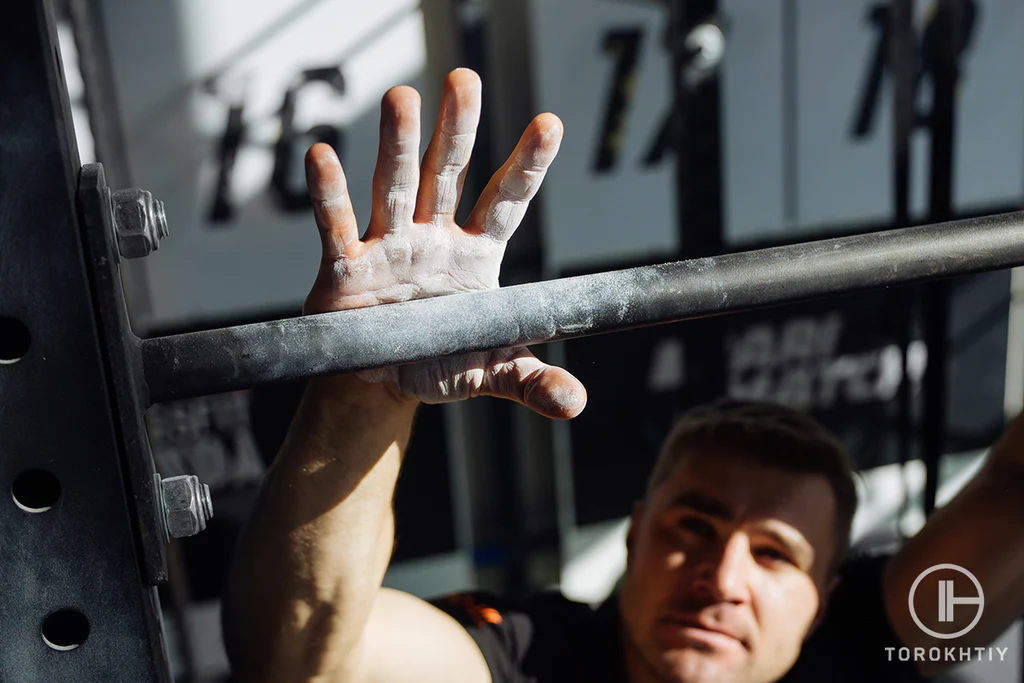
The container can be thirsty, but you can clean the container while cleaning chalk powder or a chalk block is impossible. Cleaning chalk buckets regularly and avoiding sharing personal chalk bags is essential to mitigate this risk.
Winner: Liquid Chalk
5. Mileage
Here we want to determine how long one block or powder bag of dry chalk will last you compared to a bottle of liquid chalk. When it comes to dry chalk, it comes in powder or a block. And out of the two, the block form lasts longer since you have more control over how much of the product you are using, while powder chalk can be easily overused. A block of gym chalk will last you an eternity if used properly.
A comparable amount of liquid chalk will offer more control over how much product you are using on each application, but it will almost never offer the same mileage as a block of dry chalk will.
Winner: Dry Chalk
6. Re-Application
This category refers to you applying the product onto your hands and then measuring the time it takes to diminish in its effectiveness, and you have to reapply.
Generally speaking, liquid chalk will likely last longer before you need to reapply. That being said, it is more complex than that. The duration will be determined by the oils, sweat, and moisture on a person’s hand and how well it has been applied.
Personal preferences, and ultimately – product quality. Liquid chalk is, at its core, dry chalk infused with alcohol, to change the product’s aggregate state into liquid from solid. And if the base is of low quality, the liquid will not improve.
So if you would test the product by having the same person use both, do the same workout routine, with the same warm-up level, and have the same quality chalk (dry and liquid), you’d probably have a standoff that would end in a tie.
Winner: Tie
7. Cost
It’s hard to talk about pricing points because the market is huge and you’ll easily find cheap and more expensive options for both liquid and for dry chalk (both block and powder). But, on average, liquid chalk will cost more upfront.
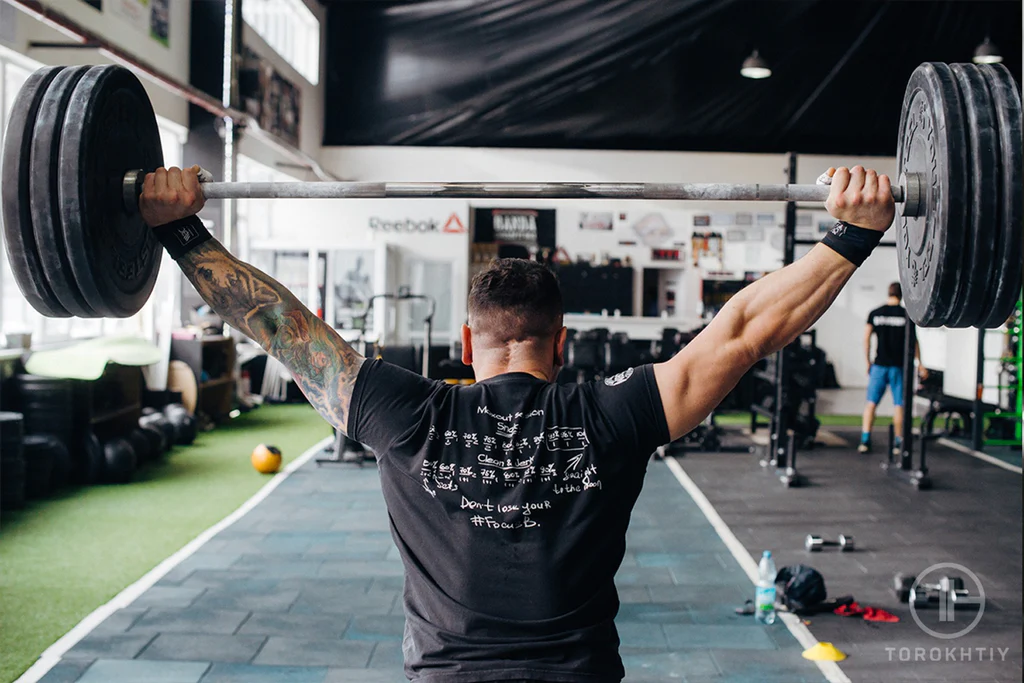
But this is also a bit misleading. The reason it would only seem liquid chalk is more expensive is that it generally lasts longer, is less messy, and is more conveniently used primarily if the same chalk is being used by multiple people.
So to sum it up, liquid chalk has a higher upfront cost. But when you account for other factors such as mileage, ease of use, messiness, longevity, and health-related concerns – liquid is actually less expensive in the long run. But, if you only care about the price tag, then dry chalk is the winner of this category.
Winner: Dry Chalk
So even though Liquid chalk comes out at the top when pitted with dry chalk, there are still features where it was very close. Both types of chalk have their advantages and disadvantages across all the categories mentioned above.
The biggest one for liquid chalk is the mess they produce, and the category that favors dry chalk is cost. But even in these categories, it is really up to you to make the final decision on what is important to you.
WBCM Liquid Chalk Review
Warm Body Cold Mind, or WBCM in short, was founded by Olympic Gold Medalist Oleksiy Torokhtiy back in 2016. The Olympian has used his reputation, alongside his now 20 years of experience, to build the brand towards its rise in popularity.
Warm Body Cold Mind Liquid Gym is my favorite chalk product. It’s more than just drying and gripping. Let me clarify. Warm Body Cold Mind Liquid Gym stands out for its ease of use. I like its simplicity. Chalkdust no longer infests my gym bag and outfit. Or doing out in a chalky gym.
This liquid chalk also adheres well and dries rapidly. It doesn’t dry, so it’s perfect for intensive workouts. It holds! No more reapplication during workouts has changed everything. This liquid chalk’s hold makes me feel comfortable even while lifting heavy. It’s like a shield of confidence covering my hands, preventing me from dropping anything in an elevator.
The downsides aren’t deal-breakers. It’s more expensive. Cleaning your hands and leaving residue on workout equipment may be challenging if you’re careless. However, the advantages outweigh the drawbacks. Its durability, usability, and grip improvement make it stand out.
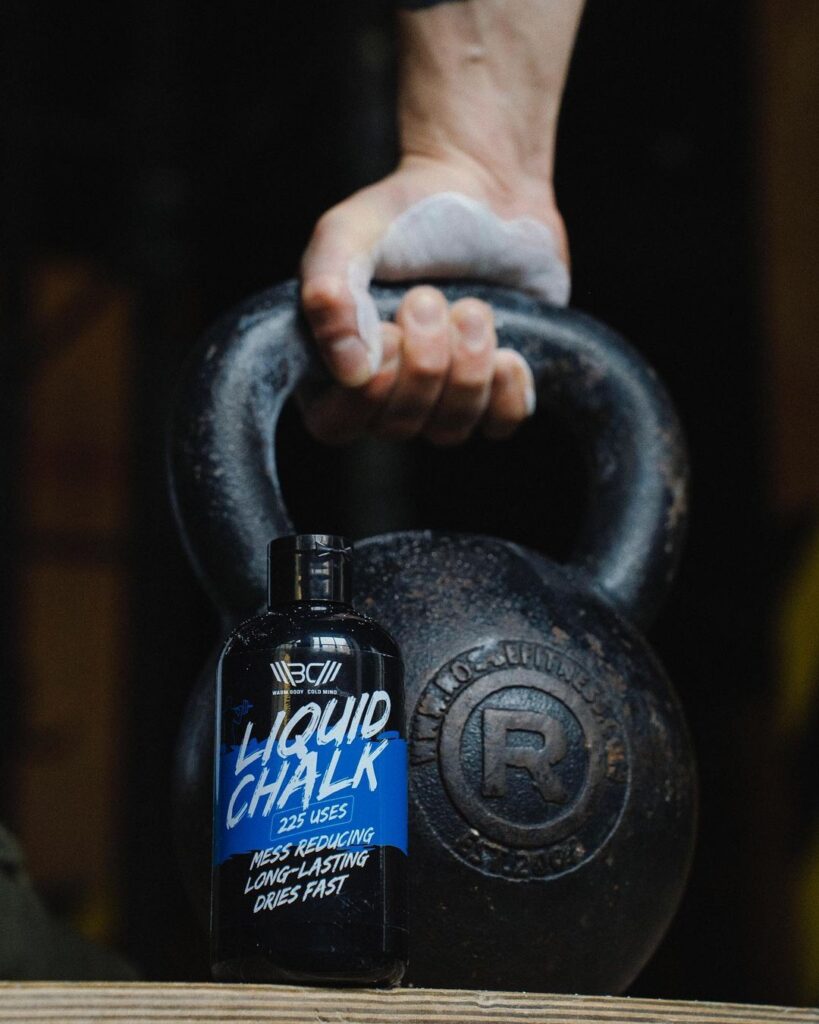
Warm Body Cold Mind Liquid Gym Chalk is unquestionably good. It’s a game-changer for any fitness enthusiast, especially for heavy lifters and those needing a tight grip and dry hands. I won’t go back to conventional chalk since liquid chalk is better. Your workouts’ increased efficiency, efficacy, and quality are worth it. Try it—you may like it. I know I did!
Pros
- Lasts longer than other similar-quality liquid chalk brands
- The 50ml package comes with a bonus carabiner for easy carrying
- This liquid chalk is unique because of its liquid scent fragrance
Cons
- The initial purchasing cost might be higher than similar-quality and similar-quantity dry chalk
Warm Body Cold Mind Block Chalk: Dry Block Chalk Review
If you prefer dry chalk over liquid chalk, we also have a solution for you. Our dry chalk was designed by athletes for athletes. We tried to tackle everything that would typically annoy you about dry chalk – dust and spillage.
And we are proud to announce that the dust is noticeably less than with other dry chalk brands we’ve used. And we’re weightlifters – so we’ve probably used them all.
The chalk’s texture is ideal for grip and silkiness, making it a great tool. It provided instantaneous protection for my hands, minimizing the risk of injury during weight training. Magnesium carbonate (MgCO3) is the only ingredient. This one isn’t experimental with color schemes; it’s just plain old natural white.
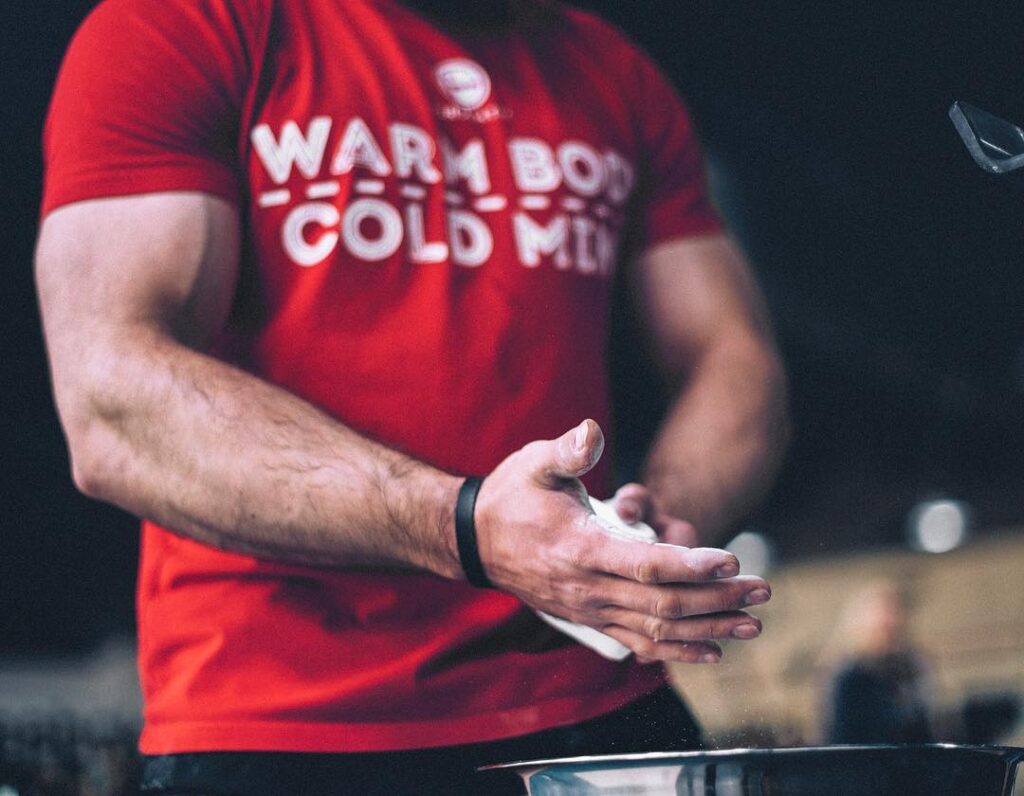
Everyday usage won’t break a single brick. While with some other brands, you’d notice the block starting to degrade over time. Excellent, since I don’t have to reapply as much as I do with other brands.
The weight of the slab is around 2 ounces (56 grams). That’s roughly 0.05 kg for our European friends. The box measures 3.98 by 3.62 by 1.85 inches. Select the 8-block package if interested. The total weight is about 0.6 kg (21.2 oz). The dimensions of the larger box are 7.4 by 7.36 by 3.86 inches.
If boxes were well sealed, broken chalk wouldn’t fall out during transport.
WBCM Block Chalk is a great buy. If you want block chalk and decide to go for this one – you won’t regret it!
Pros
- Pure magnesium block
- The block won’t break as easily as with some other brands
- Long re-application intervals
- Great affordable price
Cons
- Package could be sealed better
FAQ
Does Liquid Chalk Make a Mess?
Liquid chalk generally creates less mess than traditional dry chalk because it can’t break or create dust. You can spill it if you are not careful. Just keep in mind that some residue may still be left on equipment or floors.
Is Using Chalk Considered Cheating?
No, using gym chalk is not considered cheating in any way. It is a standard tool used to improve grip strength and prevent slipping during workouts. It is allowed in most gyms and fitness facilities, as it is a safe and effective way to enhance performance and avoid injury. If you are an Olympic weightlifter, you are allowed to use chalk to dry your hands before every lift.
Does Liquid Chalk Prevent Calluses?
Liquid chalk can help prevent calluses by providing a protective layer between the skin and equipment. However, it is not a substitute for proper grip and form, which are essential in preventing calluses from forming in the first place. It is important to note that calluses are a natural part of the body’s response to repeated friction and pressure and can even be beneficial in some cases.
Therefore, while liquid chalk may provide temporary relief, it should not be relied upon solely to prevent calluses. Also, keep in mind that there are no scientific studies that can prove how liquid chalk can outperform dry chalk in this segment. They both seemingly provide the same amount of help regarding callus prevention.
Conclusion
Liquid grip vs chalk, both have their own advantages and disadvantages. Dry chalk is cheaper and more widely available, while liquid chalk is mess-free and lasts longer. In the end, the choice between liquid chalk or dry chalk comes down to your preference and the type of activity you use it for.
If you’ve used both liquid and dry chalk, I would love to hear your opinion on both and which one you prefer and why. You can tell me all about your experiences and opinions in the comment section below.
References:
- F X Li, S Margetts, I Fowler, “Use of ‘chalk’ in rock climbing: sine qua non or myth?,” J Sports Sci . 2001 Jun;19(6):427-32, https://pubmed.ncbi.nlm.nih.gov/11411778/ (accessed May. 24, 2023).
- “Magnesium carbonate,” // Wikipedia: https://en.wikipedia.org/wiki/Magnesium_carbonate
- Julie L. McAuley, Joshua M. Deerain, William Hammersla, Turgut E. Aktepe, Damian F. J. Purcell, and Jason M. Mackenzie, “Liquid Chalk Is an Antiseptic against SARS-CoV-2 and Influenza A Respiratory Viruses,” mSphere 6, no. 3 (2021): 00313-21, https://www.ncbi.nlm.nih.gov/pmc /articles/PMC8265647/ (accessed May. 24, 2023).
- L. Owen, K. Laird, M. Shivkumar, “The Effect of Climbing Chalk Powder on the Infectivity of Human Coronavirus OC43,” Letters in Applied Microbiology 72, no. 6 (2021): 725-729, https://pubmed.ncbi.nlm.nih.gov /33619736/ (accessed May. 24, 2023).
- Stephan Weinbruch, Thomas Dirsch, Konrad Kandler, Martin Ebert, Gerhard Heimburger, Franz Hohenwarter, “Reducing Dust Exposure in Indoor Climbing Gyms,” Journal of Environmental Monitoring 14, no. 8 (2012): 2114-20, https://pubmed.ncbi.nlm.nih.gov/22767051/ (accessed May. 24, 2023).
- Y A Maruthi, S Ramprasad, N Lakshmana Das, “Trace Elemental Characterization of Chalk Dust and Their Associated Health Risk Assessment,” Biological trace element research 2017 Feb;175(2):466-474, https://pubmed.ncbi.nlm.nih.gov/27283836/ (accessed May. 24, 2023).
- Yuexia Zhang, Zhenhua Yang, Ruijin Li, Hong Geng, Chuan Dong, “Investigation of fine chalk dust particles’ chemical compositions and toxicities on alveolar macrophages in vitro,” Chemosphere 120, (2015): 500-506, https://www.sciencedirect.com/science/article/abs/pii/S0045653514010704 (accessed May. 24, 2023).
- Amalia Halim, Alexander Shapiro, Anna Eliasson Lantz, Sidsel Marie Nielsen, “Experimental Study of Bacterial Penetration into Chalk Rock: Mechanisms and Effect on Permeability,” Transp Porous Med (2014) 101:1–15, https://www.researchgate.net/publication/259635843_Experimental_Study_of_Bacterial_Penetration_into_Chalk_Rock_Mechanisms_and_Effect_on_Permeability (accessed May. 24, 2023).
- Rahul Venkat, “Weightlifting in Olympics: Everything you need to know,” 06 February 2023 15:43 GMT+2, https://olympics.com/en/news/weightlifting-olympics-rules-history-snatch-clean-and-jerk (accessed May. 24, 2023).
- “Hand calluses hurt? 5 smart tips to treat and prevent calluses,” June 15, 2022, https://www.healthmarkets.com/resources/wellness/treating-calluses-care-for-hands-when-exercising/ (accessed May. 24, 2023).
Author: Ihor Shymechko
Coach, PRO Olympic Weightlifter
Ihor Shymechko is a renowned Ukrainian weightlifter. He has represented his country in several Olympic Games, notably in 2008, 2012, and 2016. His impressive career includes winning the European championship in 2009 and earning a silver medal in 2011 in the +105 kg division. Shymechko also earned a Ph.D. from Lviv State University of Physical Culture.

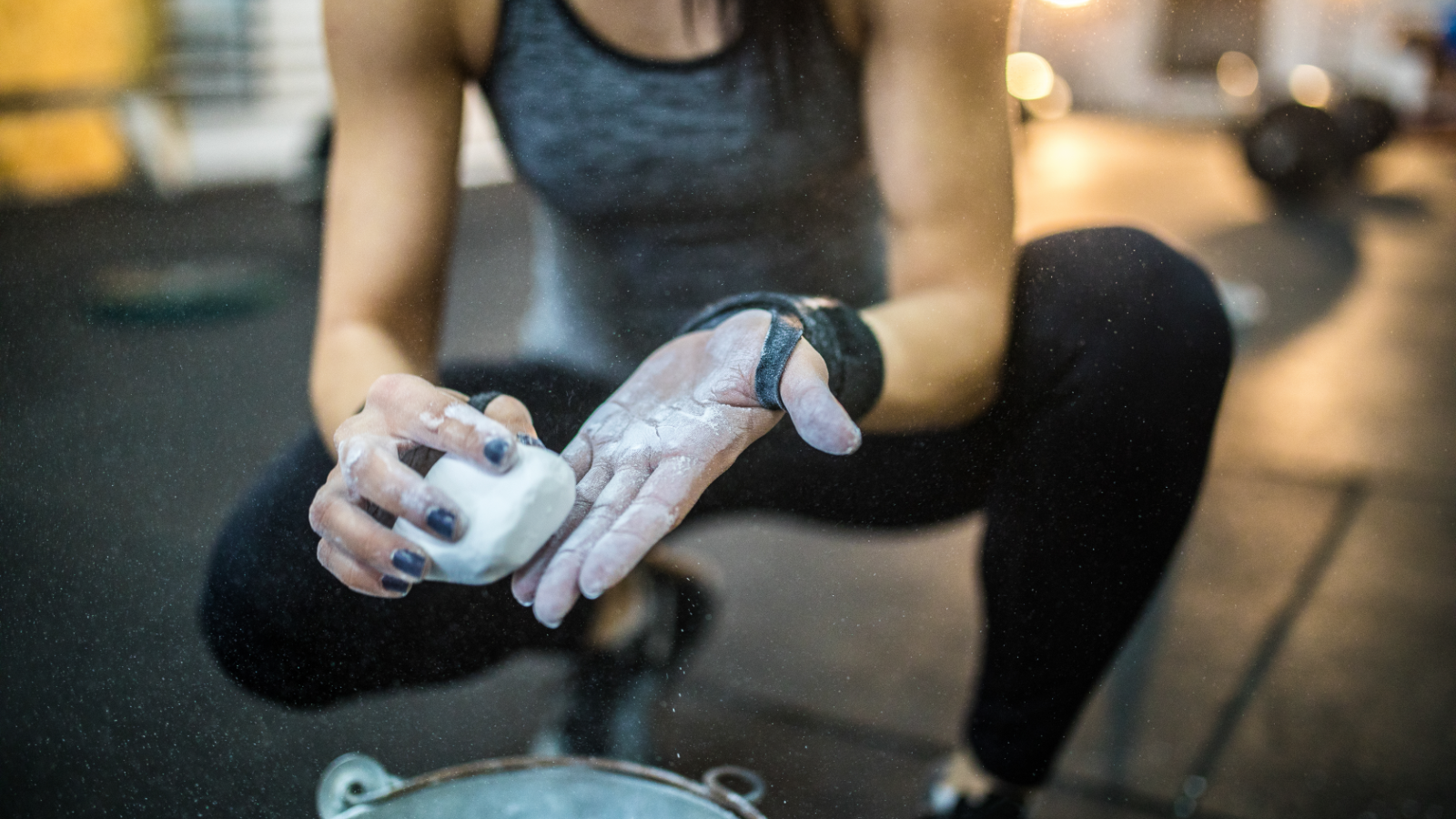
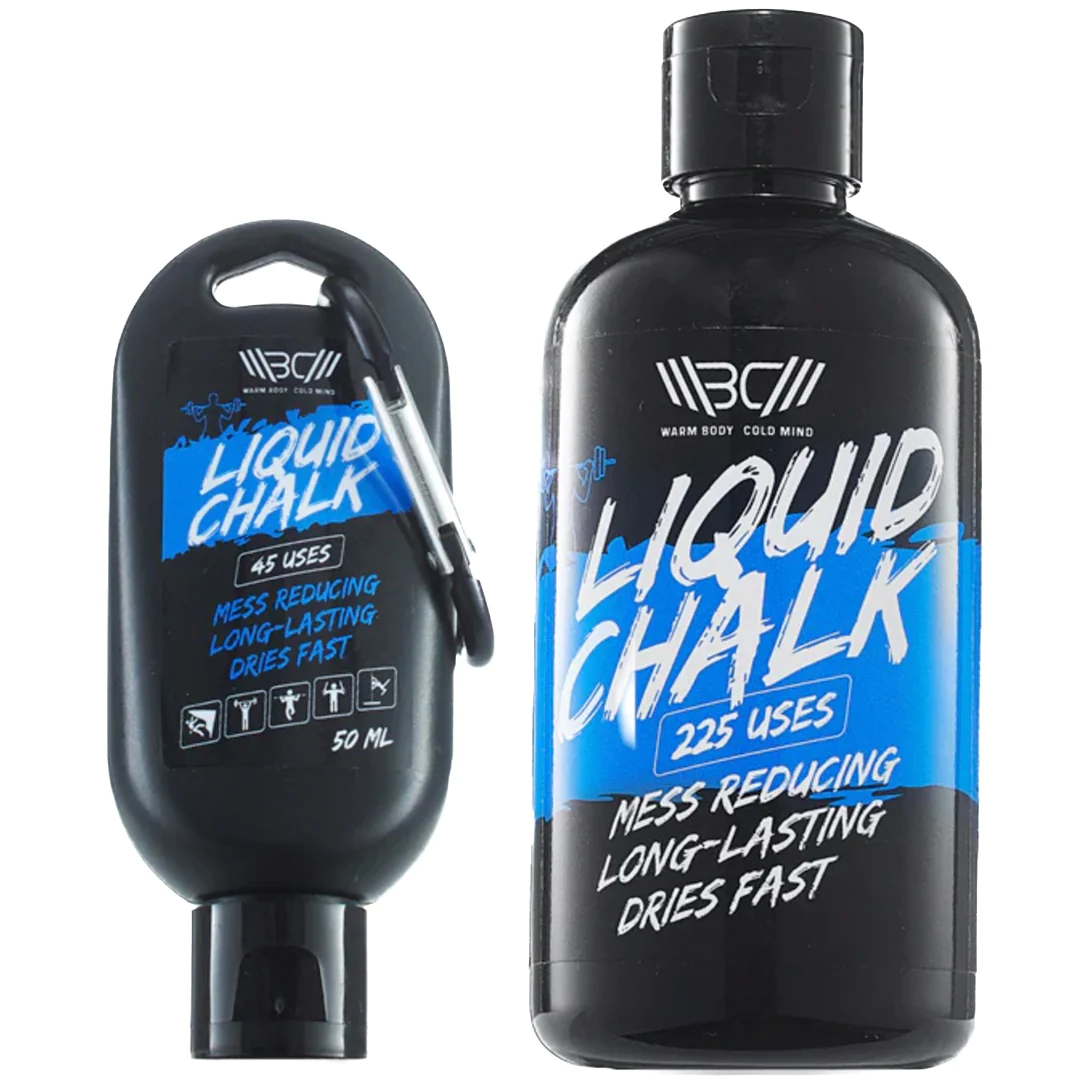

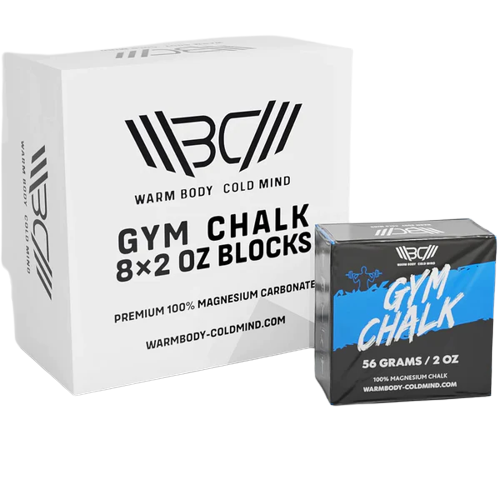

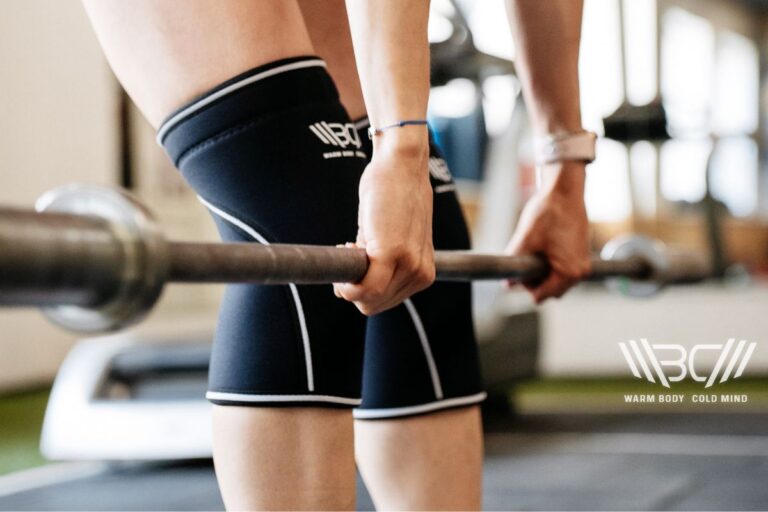
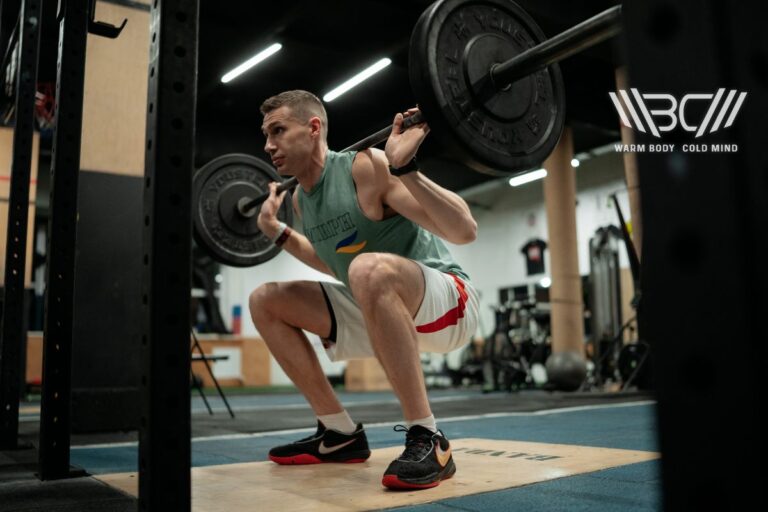
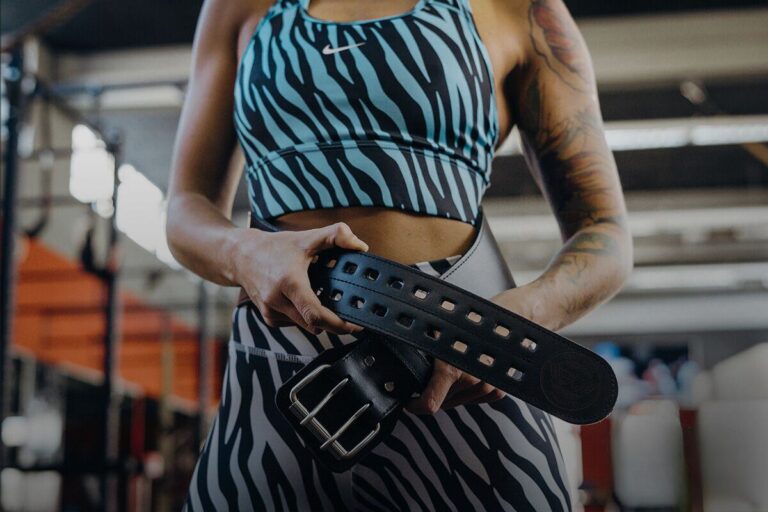
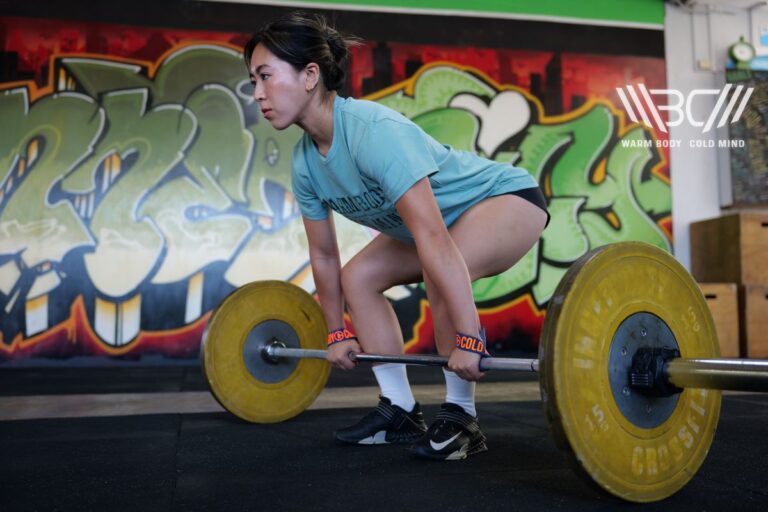
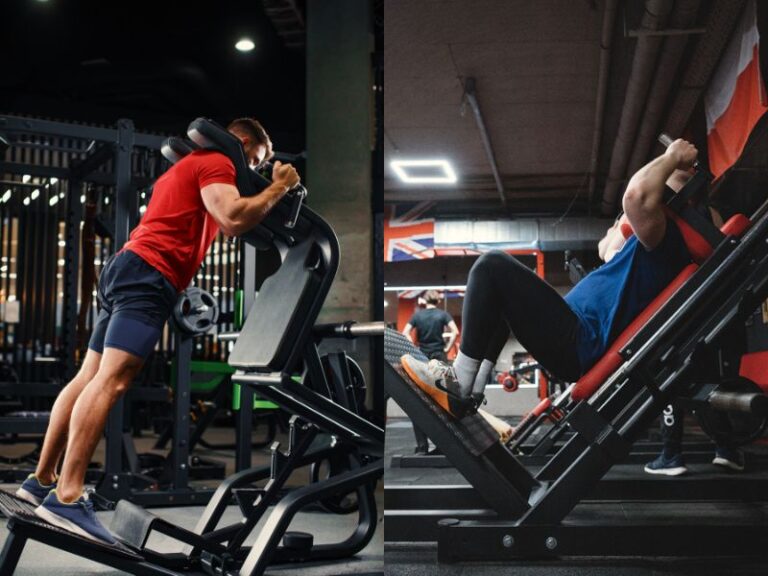
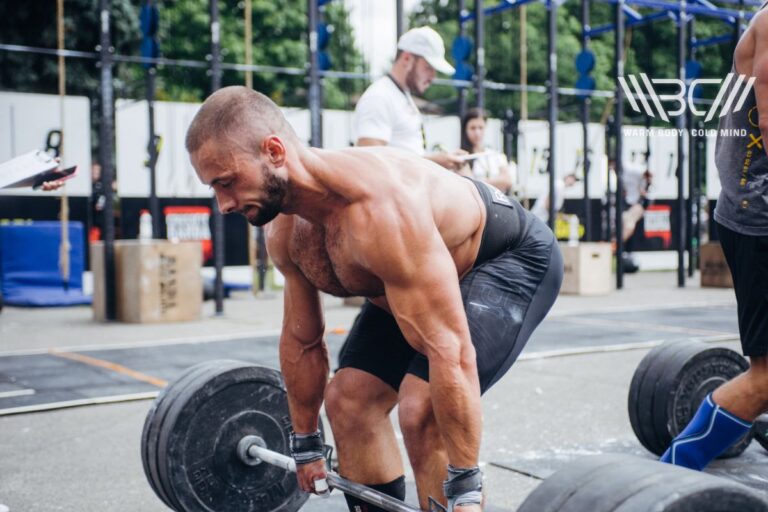
Thank you for the good advice. I’ve just recently started using liquid chalk, which is really convenient. I keep it in my bag for every training session. I’m happy with this format because it’s easy to apply, dries quickly, and rinses off well after training.